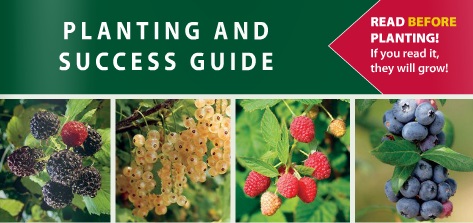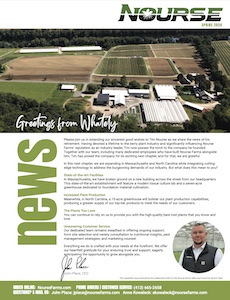How to Grow Elderberries
PLANTING
Cover the plug with ½ inch of soil and do not prune. The ideal soil pH is 6.0–6.8.
Spacing
- 3’–6’ between plants
- 10’–12’ between rows
- Plant at the same depth as grown in the nursery, all roots should be well covered.
IRRIGATION
Elderberries are not drought tolerant. It is important to keep the soil moist throughout the establishment period. From flowering through harvest, be certain the plants receive one inch of water per week. More water may be necessary if the soil is more sandy and during periods of very hot weather. Drip irrigation is the healthiest and most efficient method.
FERTILIZATION
No fertilizer should be applied in the planting year. In succeeding springs, spread one cup 10-10-10 around each plant. Apply manure or compost only after plants begin to grow.
HARVEST
Berries are generally harvested in late summer. Harvest entire clusters from the shrub. Use the fruit as soon as possible or keep it cool for later use. Strip the berries from the cluster for use.
WEED CONTROL
Thorough, manual weeding is necessary, but do not cultivate deeply. Roots are fibrous and shallow. Generally once established a thick planting will suppress weeds on its own. Compost or straw mulch will help.
SPECIAL CONSIDERATIONS
- Elderberry plants are generally free of pests.
- Birds absolutely love elderberry and an un-protected bush can be stripped clean as soon as berries turn color! Netting seems to work best.
- Plants will fruit in the second year and those canes should be removed late that fall, and every fall thereafter you will cut out the fruiting canes. The growth habit of these new varieties makes it easy to prune and maintain a nice bush.



